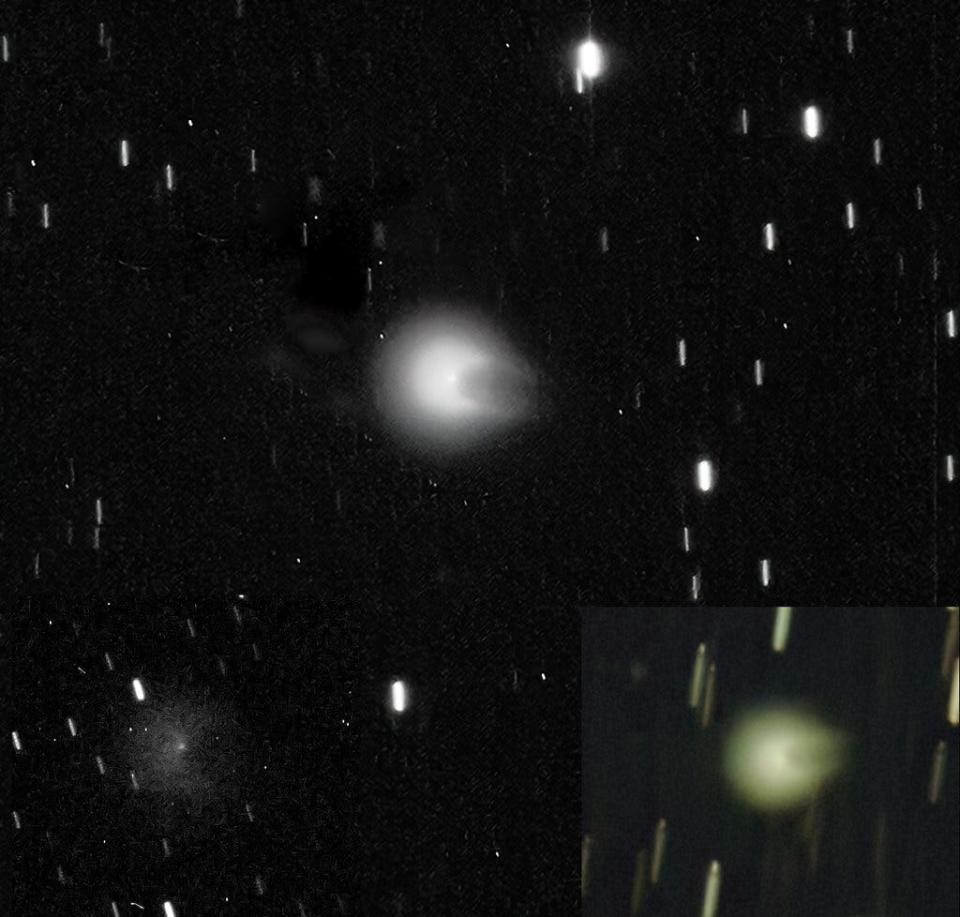'Not to be missed': 'Devil comet' may be visible to naked eye. Here's how to see it.
It's not for nothing that a gigantic comet has come to be known as the "devil comet."
As the celestial body makes its slow journey around the sun, amateur astronomers have noticed that the gas and dust the comet spews in its wake pose a faint resemblance to devil horns.
Right now, only those with powerful telescopes can see the dazzling comet. But the celestial body known in the scientific community as Comet 12/P Pons-Brooks could be visible to the naked eye in April and again in June as it makes its first pass by Earth since 1954.
Here's what to know about the "devil comet," including whether it poses a threat to our planet.
Black holes: Researchers discover oldest known black hole that existed not long after the Big Bang
Why is it called a 'devil comet?'

Its diabolical nickname notwithstanding, the comet is officially named for the astronomers credited with its first two sightings: Jean-Louis Pons in 1812 and William Robert Brooks in 1883, according to The Sky Live, which provides information and charts for celestial objects.
Comet 12P/Pons-Brooks makes a 71-year orbit around the sun, a length that classifies it as a Halley-type comet.
Sun-orbiting comets, which are composed of dust and ice, are distinctive for their long, streaming tails. Those tails form as comets heat up upon their approach to the sun, which sends gases and dust behind them in a glowing trail that can stretch millions of miles, according to NASA.
At the heart of every comet is a frozen core of dust and ice called a nucleus. As the comet approaches the sun, the ice begins to turn to gas that can burst out of the comet in a cloud of dust that creates a huge, fuzzy cloud around the nucleus called the coma.
The shape of 12P/Pons-Brooks's coma has created the appearance of horns to ground-based observers, giving the celestial body its nickname.
'Awe-inspiring:' See 5 stunning photos of the cosmos captured by Europe's Euclid telescope
When will the comet pass Earth?

The comet's approach toward Earth coincides with a total solar eclipse on April 8.
Around that time, 12P/Pons-Brooks will be at or near perihelion, the point during orbit when it's closest to the sun. That means that during the impending total solar eclipse, the comet could be very bright and be seen with binoculars or even the naked eye if conditions are clear.
"Since the comet's brightness can be unpredictable, there is no guarantee it will be visible, and viewers may need to use binoculars or telescopes to see it," according to The Sky Live. "Nevertheless, with the combination of a total solar eclipse and a potentially bright comet passing by, this astronomical event is not to be missed."
The comet will then make its closest approach to Earth on June 2, when it will be about 144 million miles from our planet and offer another opportunity to see it.
In the meantime, the comet has been dazzling amateur astronomers lucky enough to spot it in recent months with powerful telescopes.
Astronomers tracking the comet since June 2022 have observed violent eruptions in both July and earlier this month as solar radiation heats the comet's core, according to the British Astronomical Association. During both outbursts, the comet brightened and spewed clouds of gas and icy debris, the aftermath of which observers have compared to two matching horns, as well as the spaceship Millennium Falcon in "Star Wars."
Space junk: How aging satellites and lost astronaut tools are contributing to a growing orbital threat
Does the 'devil comet' pose a threat to our planet?
The "devil comet" has a well-established orbit that does not bring it close enough to Earth to present the threat of collision, astronomers say.
Its proximity to Earth is close enough for NASA's Jet Propulsion Laboratory to classify 12P/Pons-Brooks as a "near Earth asteroid." But computer simulations have not indicated any likelihood of collision anytime soon, according to spacereference.org.
Eric Lagatta covers breaking and trending news for USA TODAY. Reach him at [email protected]
This article originally appeared on USA TODAY: 'Devil comet' could be visible from Earth next year. Here's what to know:
